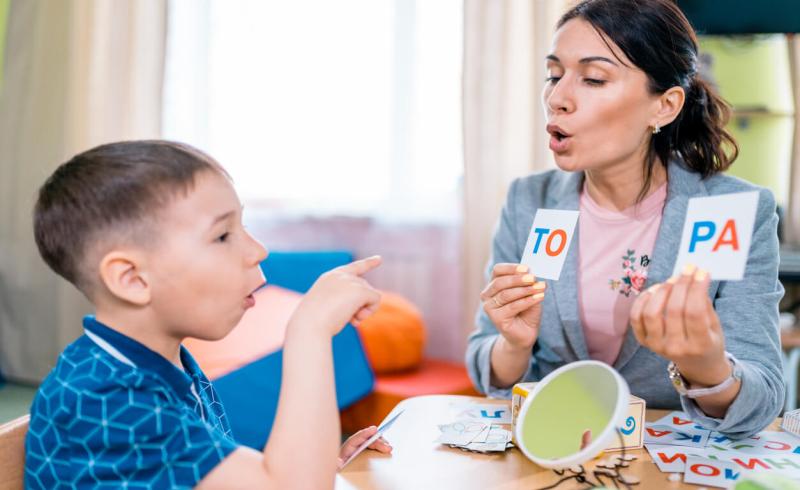Understanding the 10 Different Types of Speech and Language Disorders in Children

Understanding the 10 Different Types of Speech and Language Disorders in Children
Speech and language disorders can significantly impact a child’s ability to communicate effectively. As parents, it is important to be aware of the various types of speech and language disorders that children may experience. This knowledge can help in early identification, seeking appropriate interventions, and supporting your child’s communication development. In this article, we will explore ten different types of speech and language disorders commonly observed in children, providing you with valuable information to better understand and address your child’s needs.
- Articulation Disorders:
Articulation disorders involve difficulties with producing speech sounds correctly. Children with articulation disorders may substitute, omit, distort, or add sounds, making their speech unclear or difficult to understand.
- Phonological Disorders:
Phonological disorders affect a child’s ability to use and organize speech sounds in a systematic way. These children may exhibit patterns of sound errors, impacting their intelligibility and overall communication skills.
- Stuttering:
Stuttering is a speech disorder characterized by disruptions in the flow of speech, such as repetitions, prolongations, or blocks. It can affect the fluency and rhythm of speech, leading to communication challenges and potential social impacts.
- Language Delay:
Language delay refers to a delay in the development of language skills compared to typical developmental milestones. Children with language delays may have difficulties understanding and using language appropriately for their age.
- Expressive Language Disorder:
Expressive language disorder involves difficulties in expressing thoughts, ideas, or needs through spoken or written language. Children with expressive language disorders may struggle with vocabulary, grammar, sentence formation, or organizing their thoughts.
- Receptive Language Disorder:
Receptive language disorder pertains to difficulties in understanding spoken or written language. Children with receptive language disorders may have challenges following directions, understanding concepts, or comprehending complex sentences.
- Aphasia:
Aphasia is a language disorder caused by brain damage, often resulting from stroke, brain injury, or neurological conditions. It affects a person’s ability to comprehend and express language.
- Pragmatic Language Disorder:
Pragmatic language disorder involves difficulties with using language in social contexts. Children with pragmatic language disorders may struggle with turn-taking, maintaining appropriate eye contact, understanding social cues, or engaging in effective conversation.
- Voice Disorders:
Voice disorders affect the quality, pitch, loudness, or resonance of a child’s voice. These disorders can lead to hoarseness, breathiness, or vocal strain, hindering effective communication.
- Apraxia of Speech:
Apraxia of speech is a motor speech disorder that affects a child’s ability to plan and coordinate the movements necessary for accurate speech production. It can result in inconsistent errors, sound distortions, or difficulty with speech clarity.
In conclusion, being aware of the various types of speech and language disorders in children is essential for parents. By recognizing the signs and seeking appropriate interventions, you can support your child’s communication development effectively. If you suspect your child may have a speech or language disorder, it is advisable to consult with a speech-language pathologist who can provide a comprehensive evaluation and recommend appropriate therapies. Early intervention and ongoing support can make a significant difference in helping children overcome speech and language challenges, enabling them to communicate more effectively and thrive in their daily lives.
Speech and language disorders can significantly impact a child’s communication abilities. Understanding the ten different types of speech and language disorders can help parents recognize the signs and seek appropriate interventions for their children. Articulation disorders involve difficulties in producing speech sounds correctly, while phonological disorders affect the organization of speech sounds. Stuttering is characterized by disruptions in the flow of speech, and language delays refer to a delay in language development compared to typical milestones.
Expressive language disorders hinder a child’s ability to express thoughts and ideas, while receptive language disorders affect understanding. Aphasia is a language disorder caused by brain damage, and pragmatic language disorders impact social language use. Voice disorders affect the quality of a child’s voice, and apraxia of speech affects motor coordination for speech production.
Recognizing the signs of speech and language disorders is crucial for early intervention. Parents should seek the help of a speech-language pathologist who can provide a comprehensive evaluation and recommend appropriate speech therapy. Assistive technology, specialized therapy programs, and other resources are available to support children with speech and language disorders.
By addressing these disorders early on, children can receive the necessary support to improve their communication skills and enhance their overall development. It is essential for parents to remain proactive, seek professional guidance, and create a supportive environment for their child’s growth.
Remember, each child is unique, and interventions may vary depending on their specific needs. With patience, understanding, and the right resources, children with speech and language disorders can make significant progress, gain confidence in their communication abilities, and effectively interact with others.
By promoting awareness and understanding of these speech and language disorders, we can work towards a more inclusive society where every child has the opportunity to thrive and reach their full potential.



Leave a comment